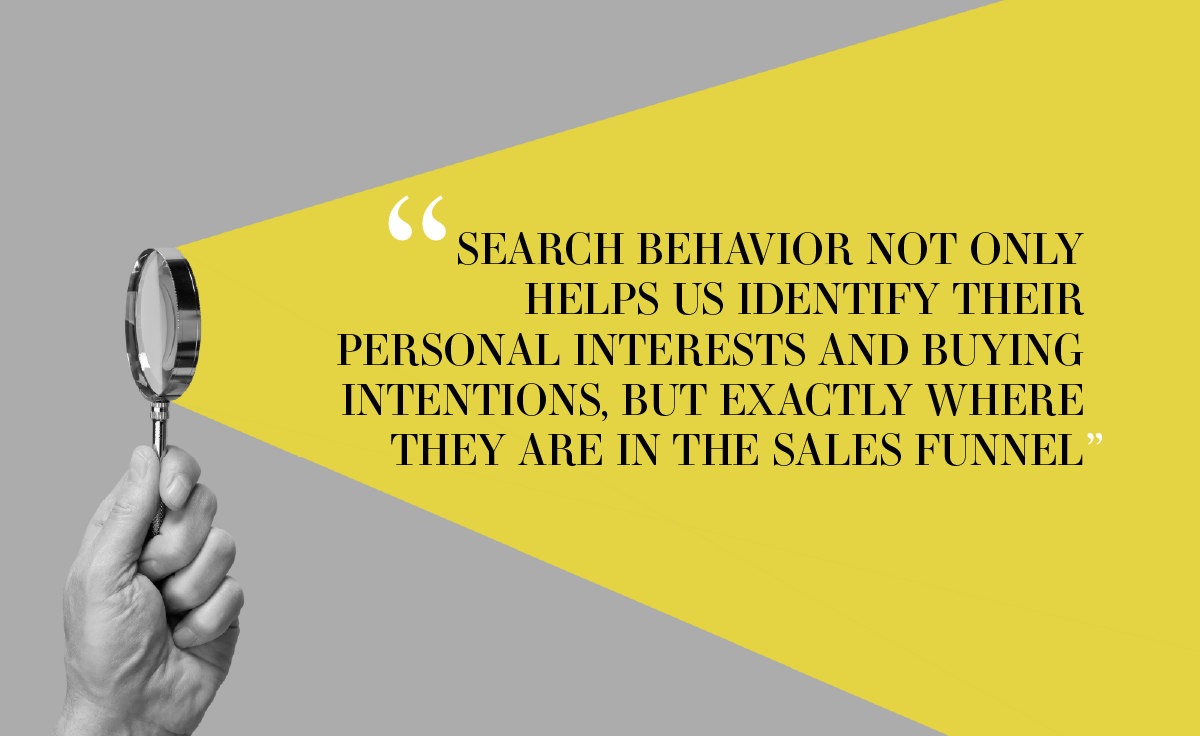Search is the Swiss Army Knife of Digital Marketing
The term “Search Marketing” has been around almost as long as the internet, itself, harkening back to the early days of basic engines like AltaVista, Lycos and AskJeeves.com. So, it’s easy to take the whole category for granted and presume digital marketers already know how to leverage these tactics to their full potential.
But just like every other aspect of our digital universe, the characteristics and capabilities of search are ever evolving and expanding. So much so that, in my experience, many marketers fail to realize the full value of search in elevating full-funnel brand awareness and overall marketing impact. In fact, I believe search may be the most versatile tool in your media workshop.
If that sounds like hyperbole, let’s start with the fact that search is one of the only digital marketing disciplines actually driven by consumers, themselves. Their search behavior not only helps us identify their personal interests and buying intentions, but exactly where they are in the sales funnel. And those insights should assist us in crafting appropriate content for every other medium.

The most common, obvious example of this content customization may be incorporating branded search terms in the creative messaging of other marketing tactics – including display, social and video.
But, in addition to the immediate impact on direct response and engagement, the insights derived from search activity for both brand and non-brand keywords can also help provide a more complete picture of full-market and full-funnel potential.
Most of today’s multichannel media platforms and measurement/attribution tools try to quantify the impact of upper-funnel awareness advertising though various, complex algorithms or offline signals. Even Google Ads encourages advertisers to implement search lift and brand lift analytics that essentially measure the perceived correlation between YouTube ads and organic search activity.
But these “black box” proprietary tools deliver general data produced by the platforms, themselves – making a full understanding of their methodology and more granular parsing of that data difficult.
So, while the media team at Modern Impact utilizes a variety of attribution tools in concert with our own proprietary platform, one of the most important brand health metrics we rely on in our research is Available Impressions for paid search brand keywords.
Put most simply, if you’re running brand term search campaigns, Google will provide you with all the metrics you need (down to individual keywords) to determine if the volume of searches for specific terms is growing or declining in comparison to upper-funnel spending increases or decreases.
Perhaps best of all, this method of conducting pre-emptive market research is not only transparent but cost agnostic. So, we’ve also employed it for distinct product lines from clients who are just considering entering a new market.
At present, Google traffics roughly 91% of worldwide search activity performed on desktops and mobile devices – making it what may be the largest, free market research database in history. So, simply accessing and assessing available brand search impressions can provide instant insights regarding prospective brand growth based on consumer interests and intent.
But these same resources can also help you measure post-campaign impact by defining the relationship between your upper funnel spending and brand search activity.
Here’s a real-world example: Modern Impact represents a national travel brand and leverages our Intelligent Pixel® for full-funnel optimization. But we also measure monthly brand searches graphically from our PPC campaigns with high-impression shares. And after running branding campaigns in 16 metro markets across the country, Google Trends measured a 79% YoY increase in client name searches – while like-for-like non-branded keyword searches for travel lines of service grew by just 10%.
That’s not just an impressive case study. It’s a compelling testament to the power of search marketing in informing, influencing and measuring full-funnel brand impact.
So, if you’re looking for more affordable ways to improve the efficacy of your upper-funnel advertising, I’m always up for a good conversation (or debate).



